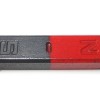Magnet Experiments: What Happens When a Magnet is Heated
Magnets can be found in many everyday items and technologies such as cars, phones and computers. It is because of permanent magnets' ability to create their own magnetic field that they are useful in various products and situations. However, they are not impervious. Magnet strength can be affected by certain environmental changes like temperature. The effect of temperature on neodymium magnets is one of the most interesting phenomenons to observe and evaluate. In this magnet experiment, we specifically explore how magnets react when exposed to extreme heat.
Safety Caution: Because this experiment involves potentially dangerous high temperatures and magnets, it is not intended for children and should not be conducted without the proper safety wear
Supplies
- Thermometer (212°F or 100°C)
- Plastic tongs
- 2
- Safety goggles and gloves
- Water
- Stove
- Pan
- Plastic bowl
- 100 ferrous paper clips
Steps
Part 1: Room Temperature Test
- Do a room temperature magnet test first. Pour the paper clips into a plastic bowl.
- Submerse one of the neodymium bar magnets into the bowl of clips and remove it, recording the number collected.
- Remove the paper clips from the magnet and set it aside. Replace the paper clips in the bowl.
Part 2: Hot Magnet Test
- Hot water and metals can cause serious burns, so it is important to take necessary safety measures. Put on safety goggles and gloves.
- Heat about ¾ cup water in a small pan until it reaches somewhere between 185°-212°F or 85°-100°C. At boiling point the water should be close to or within this temperature range. Use your thermometer to check that the degree is appropriate.
- Using the plastic tongs, gently place the neodymium magnet in the water. Be extremely careful to avoid splashing the hot water.
- Let the magnet heat in the water for about 15 minutes.
- Carefully remove the magnet from the water with the plastic tongs and place it in the bowl of paper clips.
- Observe and record how many paper clips are collected.
- Wait until the magnet is fully cooled before attempting to handle it without tongs.
Results
The heated magnet will not pick up the paper clips, or it will pick up very few depending on the temperature and time it was heated. When heated above 176° Fahrenheit (80° Celsius), magnets will quickly lose their magnetic properties. The magnet will become permanently demagnetized if exposed to these temperatures for a certain length of time or heated at a significantly higher temperature
Heat demagnetization is also dependent on what types of materials make up a magnet. Some types of magnets such as (SmCo) have higher heat resistance. There are also other types of Neodymium-iron-boron (NdFeB) magnets that are not as susceptible to heat induced flux degradation.
The Science Behind It
Magnets are made up of atoms. In normal environmental conditions, these atoms align between the poles and foster magnetism. When exposed to hotter conditions, the particles within the magnet are moving at an increasingly faster and sporadic rate. This jumbling confuses and misaligns the particles, causing the magnetism to be lost.



Great Post. I am thankful to you for sharing this post. This is very useful for me and as well as for others. Your article is very well written and unique. please keep sharing such posts. Permanent magnets
ReplyDeleteAre coach driven face to face classes part or the entirety of the training? I for one accept that training ought to have a combination of pioneers directing face to face class training, IT support Scarborough
ReplyDeleteHi there! Nice stuff, do keep me posted when you post again something like this! heart diamond suppliers
ReplyDelete